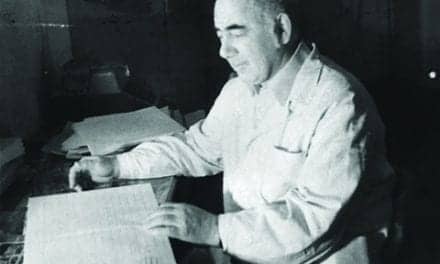The differential diagnosis of idiopathic hypersomnia is challenging for several reasons. Its hallmark symptom, excessive daytime sleepiness, is a common symptom of many disorders, and ts ancillary symptoms also overlap with other disorders. A lack of validated biomarkers adds to the challenge.
Assessing for key symptoms and medical history is a first step to help identify patients presenting with excessive daytime sleepiness who may have idiopathic hypersomnia. From there, there are several symptoms that can differentiate the diagnosis of idiopathic hypersomnia from other disorders such as sleep apnea or narcolepsy. These include:
- Sleep inertia: sleep inertia is common in patients with idiopathic hypersomnia but can also be reported by individuals with mood disorders
- Patients with idiopathic hypersomnia often find naps to be long and unrefreshing, while patients with narcolepsy generally find short naps to be restorative
- If a patient has prolonged nighttime sleep, long sleeper syndrome should be considered; in contrast to patients with idiopathic hypersomnia, long sleepers feel refreshed and do not have daytime sleepiness and difficulty awakening if they are allowed to sleep as long as they need
- Cognitive complaints, often described as “brain fog” are common symptoms of idiopathic hypersomnia but also can occur in patients with various sleep-wake disorders (including narcolepsy type 1 and insufficient sleep syndrome)
This episode is produced by Sleep Review and is episode 3 of a 5-part series sponsored by Jazz Pharmaceuticals. Visit Jazzpharma.com and SleepCountsHCP.com for more information.
In episode 3, listen as Sleep Review’s Sree Roy and neurologist-sleep specialist Yves Dauvilliers, MD, PhD, discuss:
- Idiopathic hypersomnia can be particularly challenging to diagnose because of its lack of specific biomarkers, as well as its symptoms resembling those of other disorders. How do you differentiate idiopathic hypersomnia from hypersomnias of a specific cause, such as narcolepsy type 1 and type 2, insufficient sleep syndrome, or hypersomnia due to a neurodegenerative disease?
- A minority of people simply need to sleep longer than most, even 10 hours or more, to feel refreshed. How do you determine if that applies to a given person, who may not have a sleep disorder at all?
- How do you differentiate idiopathic hypersomnia from hypersomnia comorbid to psychiatric disorders, such as prolonged sleep time tied to depression?
- At what point in ruling out other disorders should objective sleep testing, such as polysomnography and multiple sleep latency testing, be done?
- Why is idiopathic hypersomnia sometimes confused with sleep-breathing disorders? When would you recommend a CPAP trial to address possible apneas, hypopneas, or respiratory-event related arousals?
- How do you distinguish chronic fatigue syndrome from idiopathic hypersomnia?
To dive deeper:
Dauvilliers Y, Bogan RK, Arnulf I, Scammell TE, St Louis EK, Thorpy MJ. Clinical considerations for the diagnosis of idiopathic hypersomnia. Sleep Med Rev. 2022;101709.
American Academy of Sleep Medicine. International Classification of Sleep Disorders. 3rd ed. Darien, IL: American Academy of Sleep Medicine;2014.
Barateau L, Lopez R, Franchi JA, Dauvilliers Y. Hypersomnolence, hypersomnia, and mood disorders. Curr Psychiatry Rep. 2017;19(2):13.
Leu-Semenescu S, Quera-Salva MA, Dauvilliers Y. French consensus. Idiopathic hypersomnia: Investigations and follow-up. Rev Neurol (Paris). 2017;173(1-2):32-7.
Galušková K, Šonka K. Idiopathic hypersomnia and depression, the challenge for clinicians and researchers. Prague Med Rep. 2021;122(3):127-39.
Hilditch CJ, McHill AW. Sleep inertia: current insights. Nat Sci Sleep. 2019;11:155-65.
Trotti LM. Waking up is the hardest thing I do all day: Sleep inertia and sleep drunkenness. Sleep Med Rev. 2017;35:76-84.
Trotti LM. Idiopathic hypersomnia. Sleep Med Clin. 2017;12(3):331-44.
Dauvilliers Y. Idiopathic hypersomnia severity scale. 2018. http://links.lww.com/WNL/A854.
Arnulf I, Leu-Semenescu S, Dodet P. Precision medicine for idiopathic hypersomnia. Sleep Med Clin. 2019;14(3):333-50.
Trotti LM, Ong JC, Plante DT, Friederich Murray C, King R, Bliwise DL. Disease symptomatology and response to treatment in people with idiopathic hypersomnia: initial data from the Hypersomnia Foundation registry. Sleep Med. 2020;75:343-9.
Billiard M, Sonka K. Idiopathic hypersomnia. Sleep Med Rev. 2016;29:23-33.
Culebras A, ed. Sleep Disorders and Neurologic Diseases. 2nd ed. Informa Healthcare. 2007.
Thomann J, Baumann CR, Landolt HP, Werth E. Psychomotor vigilance task demonstrates impaired vigilance in disorders with excessive daytime sleepiness. J Clin Sleep Med. 2014;10(9):1019-24.
Trotti LM, Arnulf I. Idiopathic hypersomnia and other hypersomnia syndromes. Neurotherapeutics. 2021;18(1):20-31.
Khan Z, Trotti LM. Central disorders of hypersomnolence: Focus on the narcolepsies and idiopathic hypersomnia. Chest. 2015;148(1):262-73.










